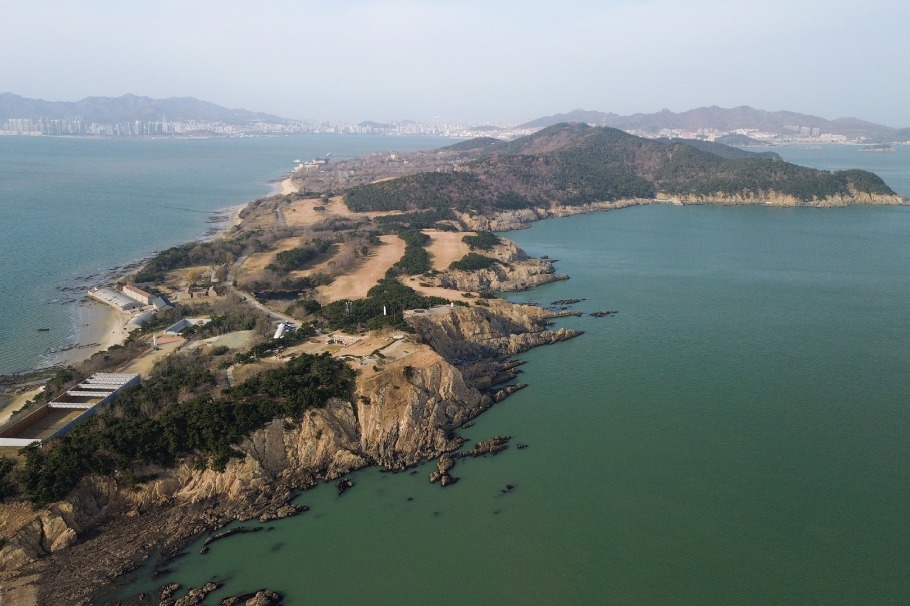Challenges await EU on the road to carbon neutrality


The European Union aims to become carbon neutral by 2050 and plans to reduce carbon emissions by 55 percent by 2030, compared with 1990 levels. This is not going to be easy.
The EU's initial CO2 emissions reduction goal for 2030 under Jean-Claude Juncker, the European Commission president until 2019, was set at 40 percent. In September last year, the EC raised the goal to 55 percent. The difference is significant, amounting to 736 million metric tons of carbon each year, which is only slightly less than Germany's total annual emissions.
The major burden will fall on road transportation, shipping and aviation, and the construction and buildings sector, as well as poor and coal-dependent countries.
"Bringing all this together-the nightmare just begins," said one senior European Commission official.
First of all, financing will be a challenge. The European Commission has pledged 1 trillion euros ($1.18 trillion) in green investments over this decade. The EU's pandemic recovery plan- Next Generation EU- as well as the EU's 2021-27 budget foresee 30 percent of financial resources linked to the green transition.
However, the European Parliament, and especially members of the European Green Party, consider these financial targets to be too low, thus questioning whether a green transition will happen in real terms.
Second, a mix of policies will be needed to achieve the EU-envisioned carbon neutral future. The European Green Deal foresees a number of policy tools being used related to industry, mobility, energy, greener buildings, agriculture and food systems, biodiversity, and a circular economy that aims for the elimination of waste and pollution and the continual use of resources.
Since the EU does not have a common climate or energy policy, the success of the green transition will depend largely on diverse national policies and differing circumstances.
In 2018, the total carbon footprint of the EU's 27 members was equal to 8.7 metric tons of CO2 per capita. But the footprint of individual countries varied widely, from 20.2 tons for Luxembourg to 15.3 tons for Estonia, 5.5 tons for Malta and 5.4 tons for Sweden. Germany's emissions equaled 10.2 tons, which was above the average, and France's hit 6.9 tons, below the average.
The EU aims for a three-pillar approach that focuses on resource efficiency, carbon pricing and international cooperation.
Joseph Stiglitz, a US economist, Nobel laureate and professor at Columbia University, has suggested that market instruments, namely carbon pricing-a cost applied to carbon pollution to encourage polluters to reduce emissions-should be the central element of the green transition, providing signals for investment, innovation and decarbonized operations.
Carbon pricing is related to "emission trading schemes", which have to be developed. The most globally developed emission trading program, established in 2005 by the EU, covers around 40 percent of the EU's greenhouse gas emissions. It limits emissions from more than 11,000 heavy energy users, including power stations, industrial plants and airlines.
Emissions covered by the EU's emission trading program declined by about 35 percent between 2005 and 2019. The transportation and building sectors, not yet covered, are expected to enter the system following proposals to be ready by June.
Beatriz Yordi Aguirre, director of the European and International Carbon Markets at the European Commission, called the EU's emission trading program "a pillar". She said it has worked very well for the past four years and should be expanded to other sectors that "are not performing so well as we would like", adding that despite the COVID-19 crisis, carbon prices have remained stable.
The major concerns are the carbon price itself and market readiness. The EU's emission trading program started with a price of 5 euros per ton of CO2, which, due to reform in 2018, grew to a minimum of 25 euros per ton and a maximum of 39 euros per ton. That is expected to increase during the decade to about 55 euros per ton, which is still considered to be too low.
Stiglitz, the US economist, has suggested that the carbon price be as high as 120 euros per ton in order to work as the driver and regulator of the green transition.
Peter Liese, a member of the European Parliament, also favors the strengthening of market measures such as the EU's emission trading program, as well as additional efforts in agriculture, technology and transportation. He said that from 1990 to 2020, the EU has reduced CO2 emissions by 25 percent, but in the next nine years needs to reduce emissions more than in the past 30 years.
Meanwhile, Ottmar Edenhofer, director of the Potsdam Institute for Climate Impact Research, and Georg Zachmann of the Brussels-based think tank Bruegel, recently proposed two EU emission trading systems: the current one and a new one for the transportation and building sectors.
Under their proposal, the new program would start with a much higher carbon price, and both systems would converge by 2030. Their suggestion also foresees a redistribution aspect of new carbon pricing, with funds directed to socially vulnerable groups to ensure a just and fair transition.
The author is a European economist working on the green transition and a former European Commission official. The views do not necessarily reflect those of China Daily.

































